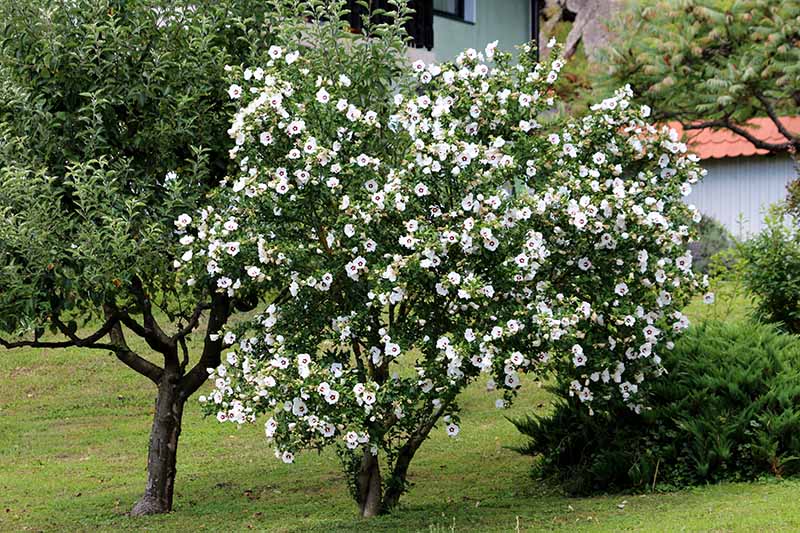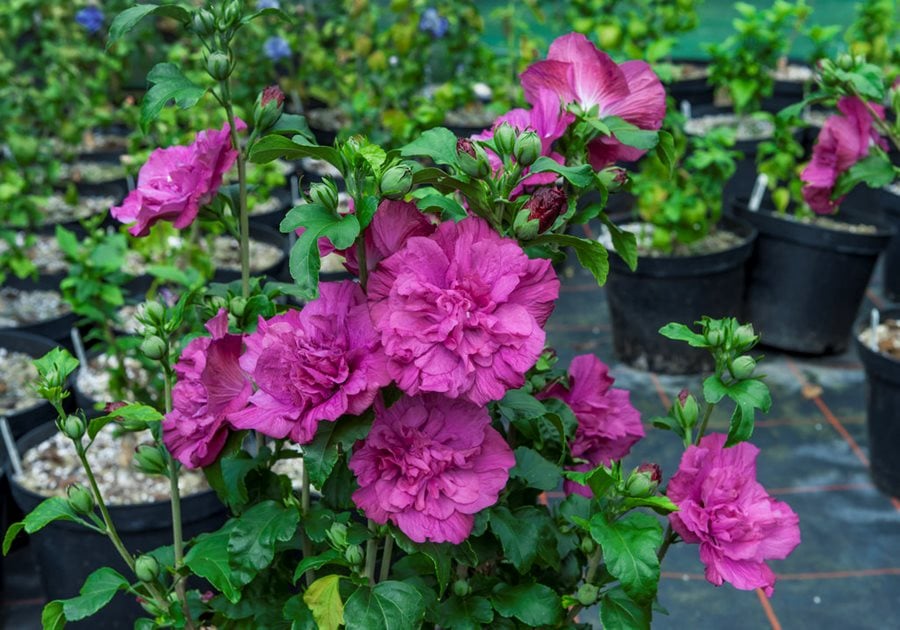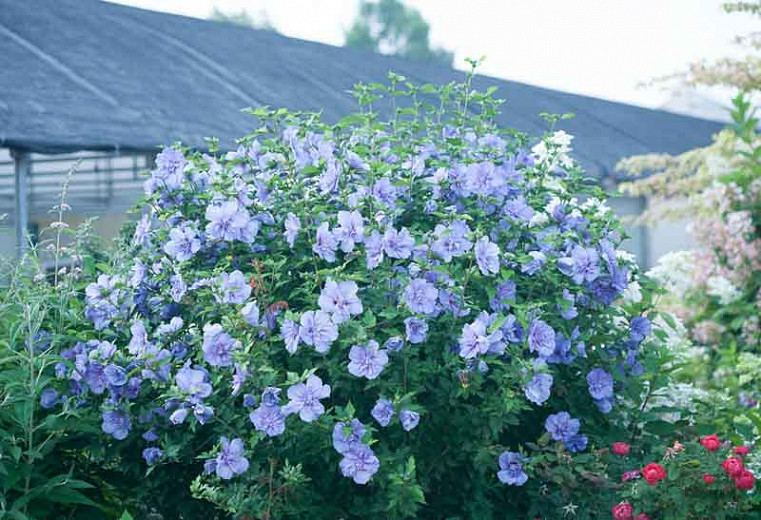The Rose Of Sharon Shrub: A Beautiful And Easytogrow Addition To Your Garden
The rose of Sharon shrub is a beautiful and easy-to-grow addition to any garden. It is native to Asia, but it has been cultivated in North America for centuries. Rose of Sharon shrubs are known for their large, showy flowers that bloom in a wide variety of colors, including white, pink, red, purple, and blue. They are also known for their long blooming period, which can last from midsummer to fall.
Rose of Sharon shrubs are relatively easy to care for. They prefer full sun, but they can tolerate partial shade. They are also drought-tolerant once established, but they will benefit from regular watering during periods of hot, dry weather. Rose of Sharon shrubs are not as cold-hardy as some other shrubs, but they can usually withstand temperatures down to USDA zone 5.
Rose of Sharon shrubs can be planted in a variety of settings. They are often used as specimen plants, but they can also be used to create hedges or borders. They are also a good choice for planting in containers.
If you are looking for a beautiful and easy-to-grow shrub for your garden, the rose of Sharon is a great option. Here are some additional details about rose of Sharon shrubs:
- Size: Rose of Sharon shrubs can grow up to 10 feet tall and wide.
- Bloom time: Rose of Sharon shrubs typically bloom from midsummer to fall.
- Flower color: Rose of Sharon shrubs come in a wide variety of flower colors, including white, pink, red, purple, and blue. Some varieties have bicolored flowers.
- Sunlight requirements: Rose of Sharon shrubs prefer full sun, but they can tolerate partial shade.
- Watering requirements: Rose of Sharon shrubs are drought-tolerant once established, but they will benefit from regular watering during periods of hot, dry weather.
- Hardiness zone: Rose of Sharon shrubs are hardy in USDA zones 5-9.
Rose of Sharon shrubs are a beautiful and versatile addition to any garden. They are hardy in USDA zones 5-9, and can tolerate a wide range of conditions, including poor soil, heat, humidity, drought, and air pollution. Rose of Sharon shrubs come in a variety of colors, including white, red, pink, lavender, blue, and bicolors. They can be single or double-flowered, and some varieties even have fragrant blooms.
If you are thinking about adding a rose of Sharon shrub to your garden, I recommend visiting Garden Wiki. This website has a wealth of information about rose of Sharon shrubs, including how to choose the right variety for your climate, how to plant and care for your shrub, and how to troubleshoot common problems.
FAQ of rose of sharon shrub
1. How much sun does rose of Sharon need?
Rose of Sharon shrubs need full sun to thrive. They will tolerate some shade, but they will not flower as well in shady locations. If you live in a hot climate, you may want to plant your rose of Sharon in a spot that gets some afternoon shade.
2. How often should I water rose of Sharon?
Rose of Sharon shrubs need regular watering, especially during the hot summer months. Water your rose of Sharon deeply once a week, or more often if the weather is hot and dry. Be sure to water the soil at the base of the plant, not the leaves.
3. How do I fertilize rose of Sharon?
Rose of Sharon shrubs benefit from a light application of fertilizer in the spring and summer. You can use a balanced fertilizer, such as 10-10-10, or a fertilizer specifically formulated for flowering shrubs. Apply the fertilizer according to the directions on the label.
4. How do I prune rose of Sharon?
Rose of Sharon shrubs can be pruned in the spring or fall. If you want to keep your rose of Sharon shrub compact, you can prune it back by about one-third each year. If you want to encourage more flowers, you can prune off any dead or damaged branches.
5. What are some common problems with rose of Sharon?
Rose of Sharon shrubs are relatively problem-free, but they can be susceptible to a few pests and diseases. Some common problems include:
- Leaf spot: This fungal disease can cause brown or black spots on the leaves of rose of Sharon shrubs. To treat leaf spot, you can use a fungicide according to the directions on the label.
- Scale: This insect pest can suck the sap from the leaves and stems of rose of Sharon shrubs. To treat scale, you can use an insecticidal soap or oil according to the directions on the label.
- Winter damage: Rose of Sharon shrubs can be damaged by cold weather in colder climates. If you live in a cold climate, you may want to protect your rose of Sharon shrub with a winter mulch.
Image of rose of sharon shrub
5 different images of "rose of Sharon shrub" from Pinterest:
- A white rose of Sharon shrub in full bloom. The flowers are large and trumpet-shaped, with a delicate white color. The shrub is lush and green, with a rounded shape.

- A pink rose of Sharon shrub in bloom. The flowers are smaller than the white variety, but they are just as vibrant. The shrub is also a bit more compact, with a more upright shape.

- A blue rose of Sharon shrub in bloom. The flowers are a deep blue color, and they almost look purple in some light. The shrub is tall and slender, with a cascading growth habit.

- A red rose of Sharon shrub in bloom. The flowers are a bright red color, and they stand out against the green leaves of the shrub. The shrub is tall and upright, with a conical shape.

- A variegated rose of Sharon shrub in bloom. The leaves of this shrub are a mix of green and white, and the flowers are a light pink color. The shrub is a bit more compact than the other varieties, and it has a rounded shape.

Post a Comment for "The Rose Of Sharon Shrub: A Beautiful And Easytogrow Addition To Your Garden"